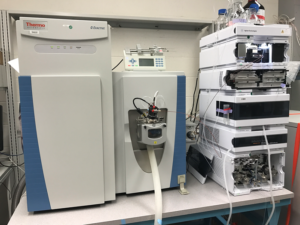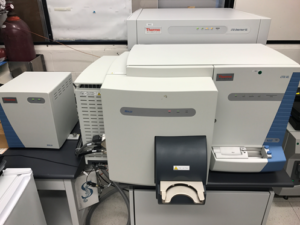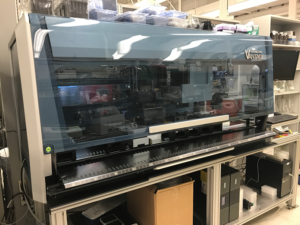Mass Spectrometry
LC-MS system with a Thermo Q-Exactive Orbitrap mass spectrometer coupled to an Agilent 1290 UHPLC enabling analysis of complex samples for semi-quantitative and quantitative measurements and detection of novel secondary metabolites. Coupled with chromatographic separation, UV as well as MS and MS/MS fragmentation spectra are acquired during the same run from each sample extract, with each detected m/z having a mass resolution of 70,000 for MS (accuracy of ~3 ppm) and 17,500 for MS/MS. With this information, metabolites can be identified by comparison to standards using a “targeted” approach, and with an “untargeted” approach, putative chemical formulas can be generated (from accurate mass) for unknowns and fragmentation spectra used for further insight into chemical structure and potential identification.
Thermo LTQXL Maldi Orbitrap enabling high-throughput MS analysis of hundreds to thousands of samples.
Sample Preparation
Hamilton Vantage robotic liquid handler for automated sample extraction.
Additional equipment routinely used in sample extraction at the JGI includes a SpeedVac for drying solvent extracts, lyophilizer to freeze-dry aqueous samples as well as a bead-beater and probe sonicator for lysing cells and other biomass.


